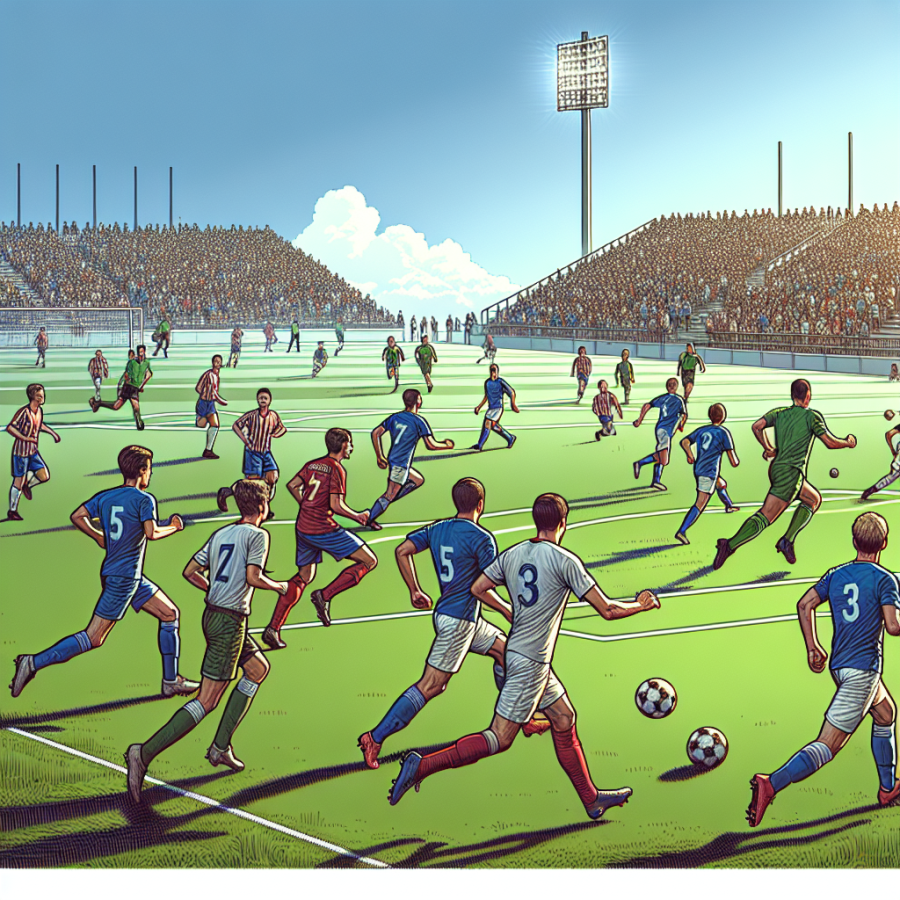Deciphering Player Positions and Their Roles in Soccer
In soccer, each player on the field has a specific position to play and a role to fulfill. Understanding these positions and their functions is essential for fully appreciating the game’s strategies and tactics. The first step to understanding soccer is learning the basic player positions and their roles. Here’s a breakdown:
Goalkeeper (Goalie)
The goalkeeper is the last line of defense and the first line of attack. Their primary role is to prevent the opposing team from scoring by blocking their shots on goal. Goalkeepers can use any part of their body to save the ball, which is a privilege unique to this position. Beyond shot-stopping, goalies are also involved in setting up attacks by accurately distributing the ball to their outfield teammates.
Defenders
The defender's main job is to block the opposing team from getting to the goal. A soccer team may have different kinds of defenders, including center-backs, full-backs, and wing-backs. Centre-backs usually take the role of blocking the other team’s striker directly while full-backs or wing-backs deal with attacks from the wings. In modern soccer, defensive players also contribute to attacks and even score goals.
Midfielders
The role of a midfielder is mainly to control the game by keeping possession of the ball and distributing it to other players. Midfielders are often the most versatile players, needing to help with both offensive and defensive duties. They facilitate passes between the defenders and strikers, create goal-scoring opportunities, and often help defenders in repelling attacks.
Forwards/Strikers
Forwards, also known as strikers, are primarily responsible for scoring goals. Their role requires them to get clear of defenders, receive the ball, and try to shoot it into the opponent’s goal. The striker role demands excellent ball-handling skills, speed, and precise finishing.
Winger
Part of the forward line, but positioned near the touchlines, wingers are critical in serving the ball into the box from the wide areas of the pitch. They are typically quick runners with excellent dribbling skills. Their primary responsibilities include creating chances for strikers and occasionally cutting in to have a shot at goal themselves.
These positions and roles are the foundation of a soccer team. However, depending on the coach's tactics and the team's style of play, soccer positions may have varied roles and functions.
Read also:
High-Speed Excitement: All About the Thrill of Skate Racing
The Tactical Dynamics of Soccer: How Players Move on the Field
Soccer, also globally referred to as football, is a game that goes beyond merely kicking a ball towards the goal. Understanding the game involves a thorough analysis of player roles, game strategies, and tactical dynamics on the field. This piece will focus on the tactical dynamics of soccer and how players move on the field.
One of the primary dynamics in soccer is positioning. Each player is assigned a specific position on the field that determines their responsibilities throughout the match. The three main positions are defenders, midfielders, and forwards. However, these positions are further subdivided into more specialised roles, including centre-backs, full-backs, wingers, and strikers. How each player moves is highly dependent on their assigned position.
Defenders generally operate close to their team's goal, with their primary purpose being to prevent the opposition from scoring. Centre-backs mainly stay within the penalty area, marking opposing offensive players and clearing dangerous crosses and long passes. Full-backs, on the other hand, frequently interact with both their midfield and forward players, aiding in creating attacking opportunities and placing diagonal and forward passes.
Midfielders serve as the link between the defense and the attacking players. They constantly move on the field, covering the most ground compared to other players. Midfielders assist in defensive duties but also initiate attacks by passing the ball forward or out wide to the wingers. Their movement is principal to ball possession and dictates the pace of the game.
Forwards or attackers have the principal objective of scoring goals. Their movements are frequently towards the opponent's goal, and they often make runs behind the defense line to receive passes. Strikers largely stay at the forefront, ready for any goal-scoring opportunities, while wingers exploit space along the flanks, delivering crosses into the penalty box.
The other critical aspect of tactical dynamics in soccer is the formation. The formation dictates the initial set-up or arrangement of players on the field. Some of the common formations include 4-4-2, 4-3-3, 4-2-3-1, and 3-5-2, among others. Each formation influences players' movements, roles, and responsibilities on the field.
A team's style of play also significantly impacts the movement of players on the field. For instance, a team favoring a possession-based approach will see players consistently moving, passing the ball around to keep it away from their opponent.




